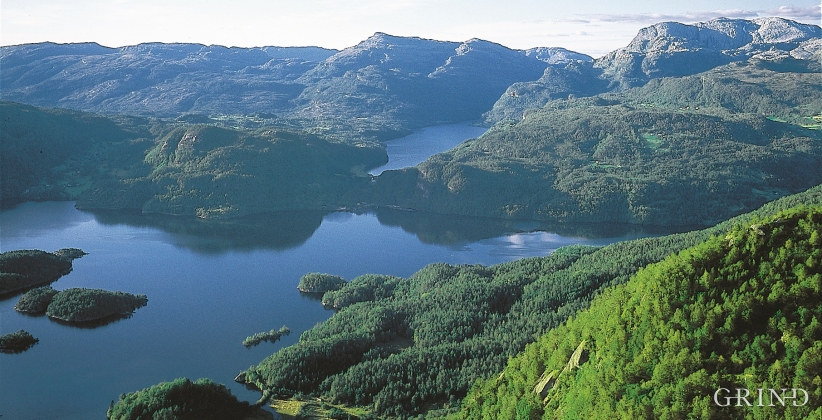Published: 29.07.2015 | Author: Stein Byrkjeland
RECORD-BREAKING FISH
Lake Skogseidvatnet is the most famous fishing lake in Hordaland, with good stocks of both char and trout. There is fishing here throughout the year: with a net in the autumn, through the ice in winter, and with a fishing rod in the summer.
Lake Skogseidvatnet lies at only about 13 metres above sea level. The deepest part is about 130 metres deep. The Sævareid water system, of which Lake Skogseidvatnet is a part, is naturally poor in nutrients with a low concentration of organic matter, though over time it has had large quantities of nutrient salts added from the aquaculture and agriculture industries. During the middle of the 1980s, large amounts of toxic blue-green algae thrived in Lake Skogeidvatnet. There are still some blue-green algae today, but in much lower quantities, and the phosphate concentration has also been reduced.
Char as big as 8 kilogrammes have been caught in the lake. This is among the biggest ever found in Norway. The high level of nutrients for fish, especially on the outside of the aquaculture cages, may explain why the char grow so big. It also is because the species of char here is a different, bigger type, that distinguishes itself genetically from the char we find elsewhere in Norway. In the autumn, net fishing for char in the beautiful lake is a good source of food for both the townsman and farmer.
Also the trout grow to be large in the Sævareid water system. In addition, rainbow trout as big as 10.1 kilogrammes have been caught using a fishing rod in Lake Skogseidvatnet. This is a European record by nearly a kilo. The strain of rainbow trout is a result of escaped fish from a fisheries plant that was located in Lake Skogeidvatnet in the 1980s. The plant was controversial because of fear of pollution and of infecting the wild fish with disease. Today, wild rainbow trout breed in the lake, as one of few places in Hordaland.
The fish farmers here have learned a lot and today view themselves as pioneers with respect to fish farming in fresh water. The fish plant was dismantled a long time ago. Now, one finds three salmon smolt (baby fish) plants instead, and they make it possible for Fusa to produce more baby fish for setting out than any other municipality in the country. Still, the chance of contamination is present, and the waterways must be monitored carefully. In addition to giving extra nutrients to the wild fish, the leftover food from the fish plant provides food for the ducks. In periods during the winter, several hundred ducks were seen near the one plant, mostly Goldeneyes.




